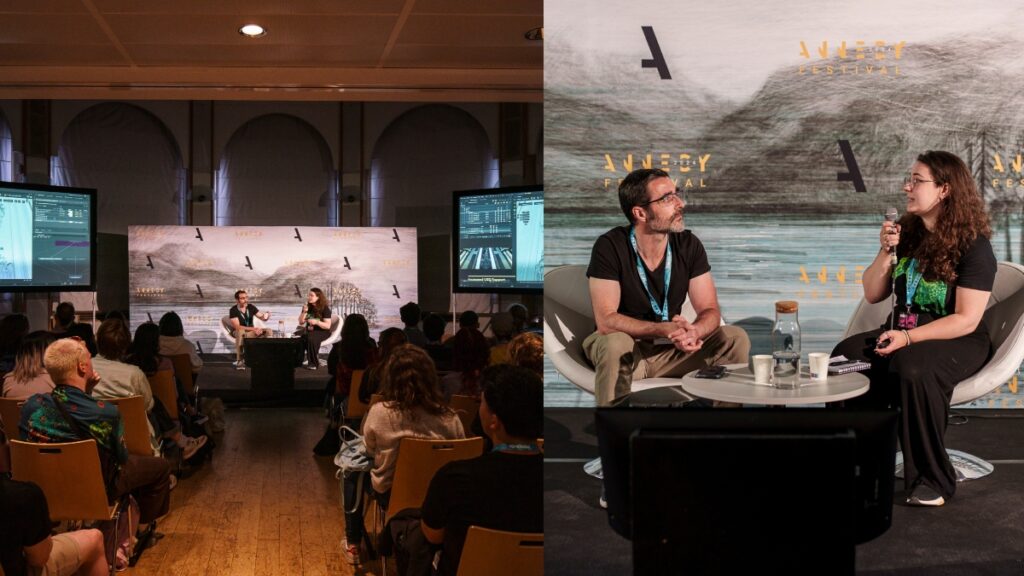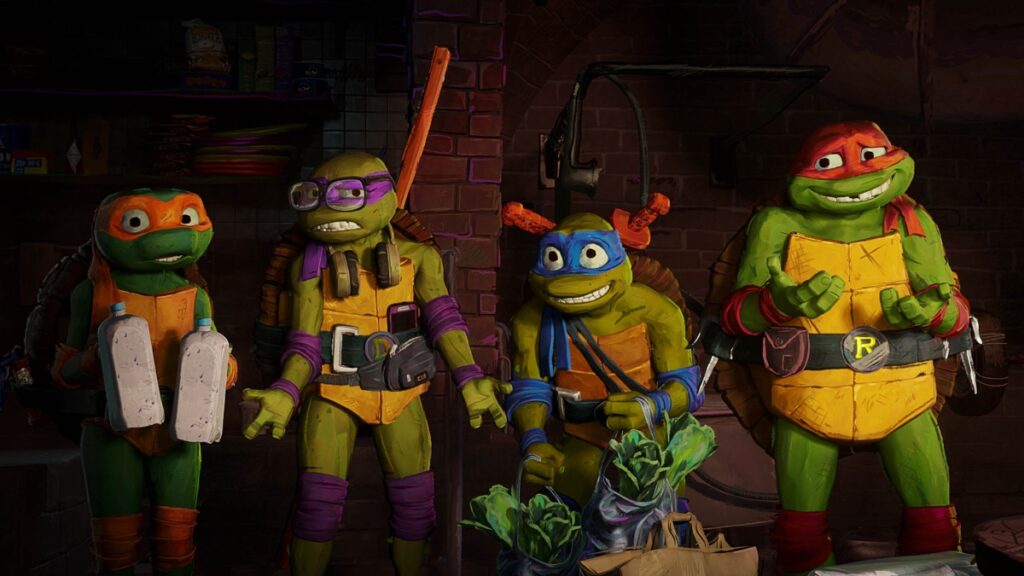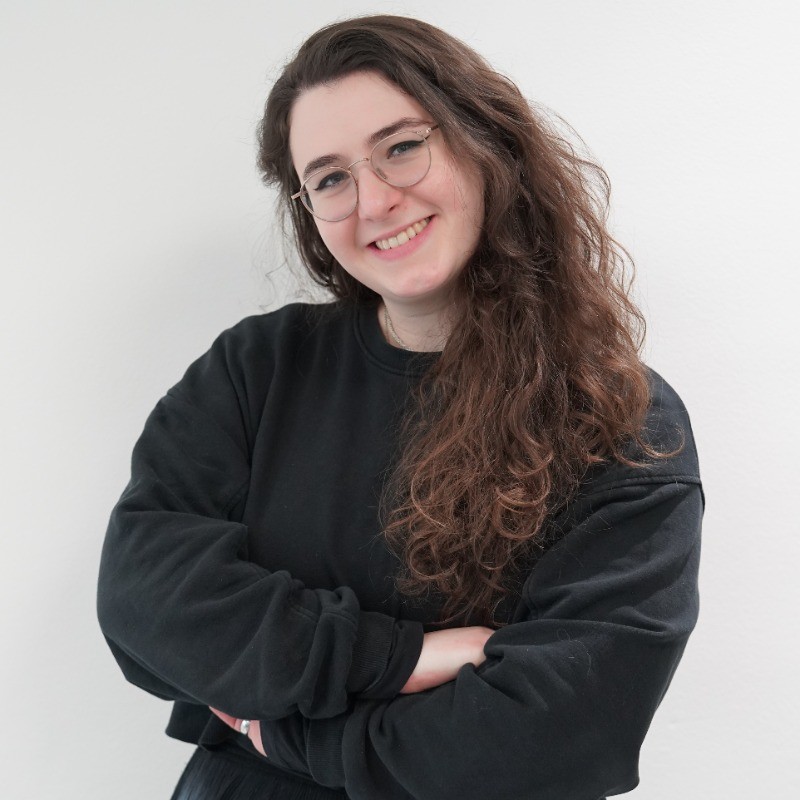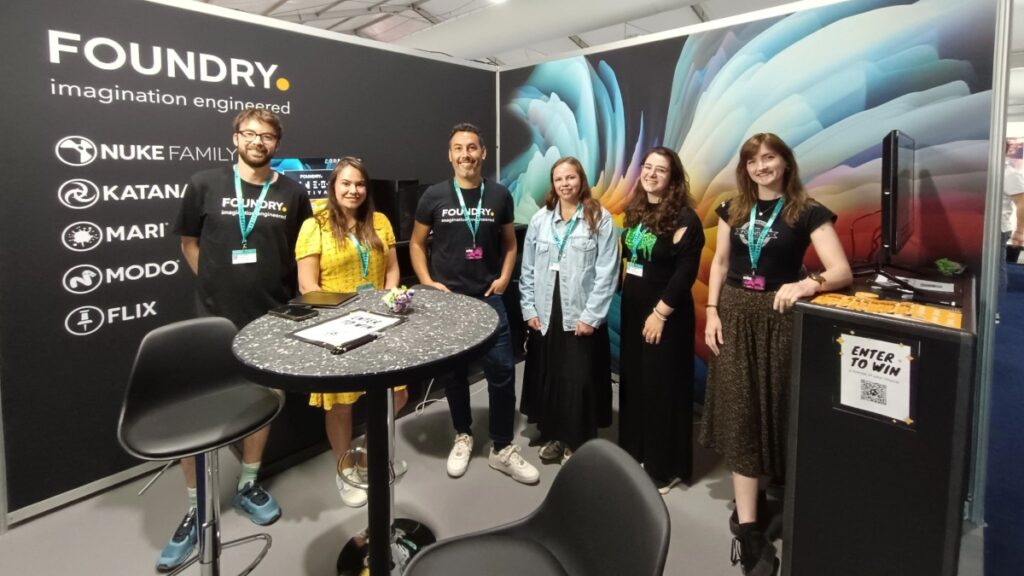When Foundry’s Arielle Martin spoke to the Mikros Animation team about the latter’s outstanding work on Teenage Mutant Ninja Turtles: Mutant Mayhem, she was amazed at how their tools enabled the studio to efficiently achieve the grungy stylised look. Foundry’s look development and 3D lighting software, Katana, was instrumental in delivering the animated film’s unique visuals. Martin and the Mikros team discussed this in length during their session on “Teenage Mutant Ninja Turtles: Lighting for Stylised Animation” at Annecy Festival’s film market MIFA.
“Mutant Mayhem’s interpretation of non-photorealistic rendering was extremely innovative and freeing, and I’m eagerly looking forward to seeing what they do next,” exclaimed Martin, the product manager at Katana, in an interview with AnimationXpress at the film festival. At MIFA, Foundry engaged actively with studios, educators, and students. “There were many discussions at the booth about Foundry tools,” Martin shared.

Foundry’s latest offering is Katana 7.0, which the creative software company released late last year. “Katana 7.0 was the first release to have a USD-native framework. We now have two USD offerings, including the latest one and the pre-existing USD nodes,” explained Martin. “We are continuously building tools around that framework in order to provide an increasingly rich experience in that space.”
Studios are eager to advance towards USD, and Foundry understands that this switch can be challenging, “especially when there’s a pre-existing pipeline in place (and at scale for some of our customers), it can become costly and sometimes impossible to do it all at once,” Martin mentioned. “With Katana 7.0, this new USD-native framework works well with pre-existing workflows, as they all exist in the same context. Katana handles any needed conversions at the point of rendering, making it a smooth experience. Therefore, when you’re transitioning to USD, that USD information can be phased into the pipeline and work alongside with your existing setups. There is no rigid barrier between both – you can selectively convert back from USD-native information to use Katana’s artist toolsets dedicated to lookdev and lighting.”
Talking about her conversations with fellow festival attendees, Martin said, “There has been a lot of disruption in the industry. Like other M&E companies, we too are still feeling the effects of last year’s WGA strike. Gradually, we are seeing signs of recovery and are hoping that trend continues through 2024 and beyond.”
With more than 25 years of presence in the M&E space, Foundry’s award-winning products are utilised by film studios and post-production houses such as ILM, DNEG, Pitch Black, Walt Disney Animation Studios, Wētā FX, Pixar, Marvel, Netflix, Framestore and Technicolor Creative Studios. Apart from Katana, its products – including Nuke, Mari, Flix, Modo and more – are used to create VFX and animation in feature films, episodic content and commercials.
While headquartered in London, Foundry has a global presence in major regions like the USA, Canada, China, Japan, and Australia. The company is present in India through its India distribution partner, Ark Infosolutions. “The Indian VFX market has grown significantly, and the work from our customers in the region has been outstanding. From India, we have seen particular interest in Katana over the last few years, and this has been a great opportunity for our team to spend more time in the region,” Martin revealed.
Martin and her team are witnessing the rise of USD and other open-source technologies. “This movement highlights how the most innovative studios are thinking more deliberately about their future pipelines and ways of working,” she said.
On the current industry trend, Martin commented, “We are seeing stylised animation and non-photorealistic rendering (NPR) becoming popular. A vast amount of student projects we saw explore NPR and distinct animation styles. We look forward to seeing such innovative projects in the future.”




